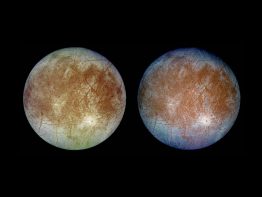Researchers from the University of Washington and the University of California, Berkeley have conducted experiments that measured the physical limits for the existence of liquid water in icy extraterrestrial worlds. This blend of geoscience and engineering was done to aid in the search for extraterrestrial life and the upcoming robotic exploration of oceans on moons of other planets. The results were recently published in Cell Reports Physical Sciences.
Read more at UW News »Four students from UW Environment honored in 2022 Husky 100
Congratulations to four College of the Environment students recognized in the 2022 Husky 100! The Husky 100 actively connect what happens inside and outside of the classroom and apply what they learn to make a difference on campus, in their communities and for the future. Through their passion, leadership and commitment, these students inspire all of us to shape our own Husky Experience.
Read more »Spring Celebration 2022 honors 2021-22 UW Environment award winners
Each year, the College of the Environment recognizes the outstanding achievements of our community at Spring Celebration. Chosen through a College-wide nomination process, awardees are recognized by their colleagues for making unique, inspiring and meaningful contributions to our community during the academic year. All College faculty, staff, students, postdocs, and their guests are invited to attend this year’s hybrid event, where Dean Maya Tolstoy will present the awards.
Read more »"The stars have moved": how climate change is impacting the planet at multiple scales
Situated on an Arctic barrier island along the northwest coast of Alaska is the village of Kivalina, an Iñupiaq community of about 500 people. Colleen Swan, city administrator and coordinator of its volunteer Search and Rescue organization, is an advocate for her community and has always taken concerns about Indigenous health, environment and identity seriously, and works to seek out solutions.
Read more »Joel Thornton named new Chair of the Department of Atmospheric Sciences
The UW College of the Environment is pleased to announce that Professor Joel Thornton has agreed to serve for a five-year term as director of the Department of Atmospheric Sciences, effective July 1, 2022. Thornton is an atmospheric scientist who studies the impacts of human activities on air quality and climate through changes to the atmosphere’s composition and chemistry. His focus is on the processes which regulate the formation and removal of short-lived greenhouse gasses such as methane and ozone, and the formation and growth of airborne particulate matter.
Read more »





